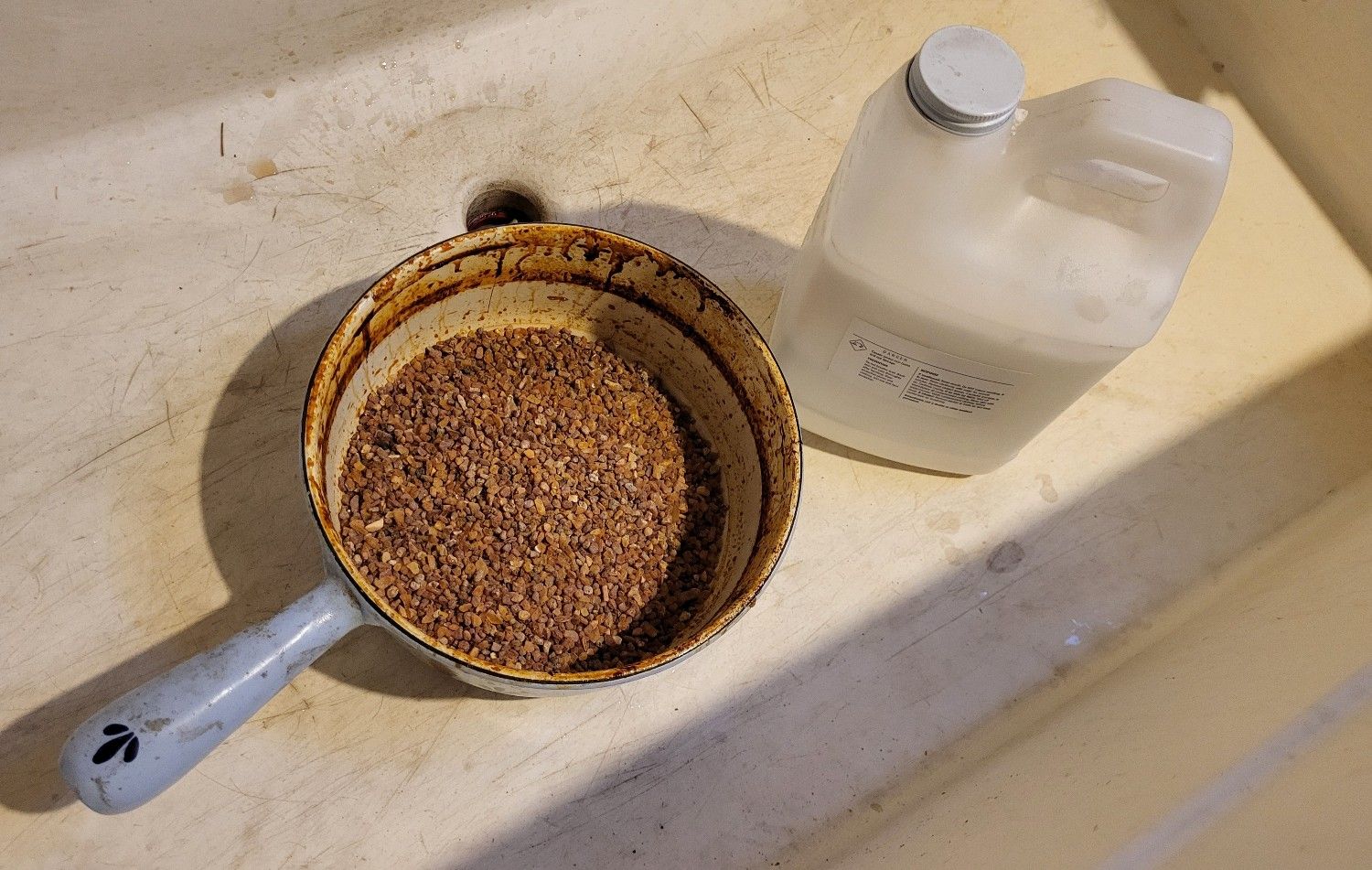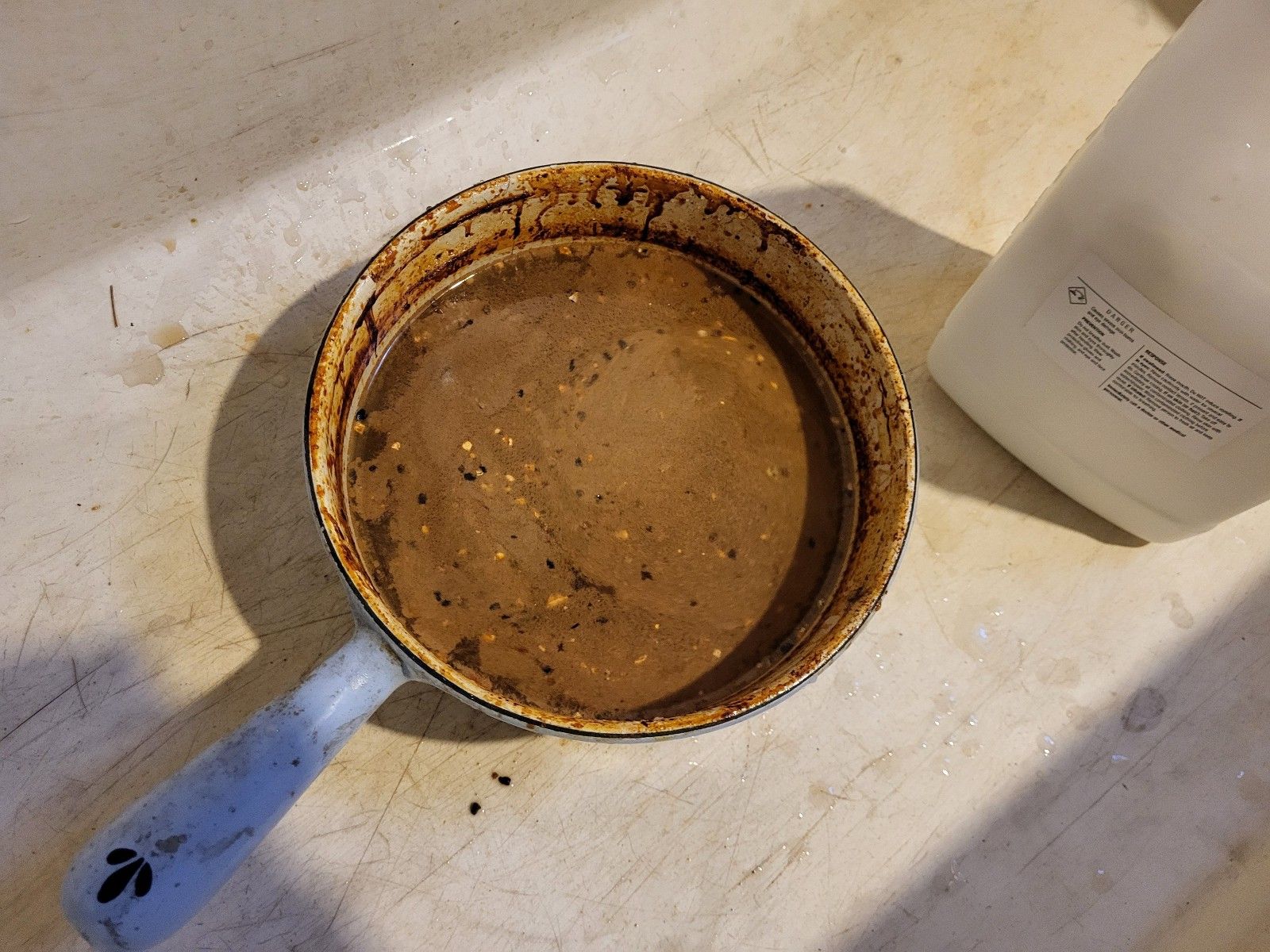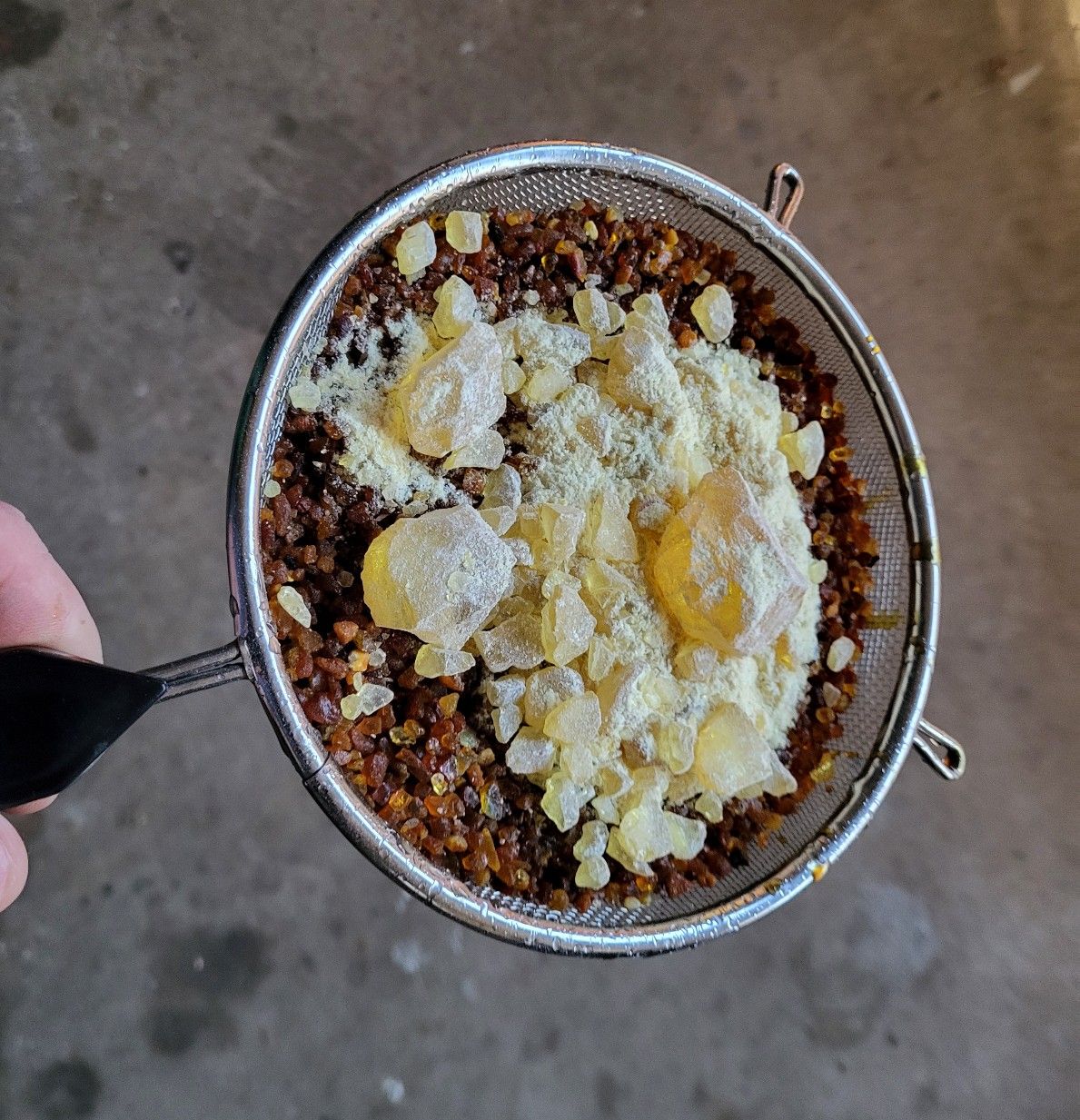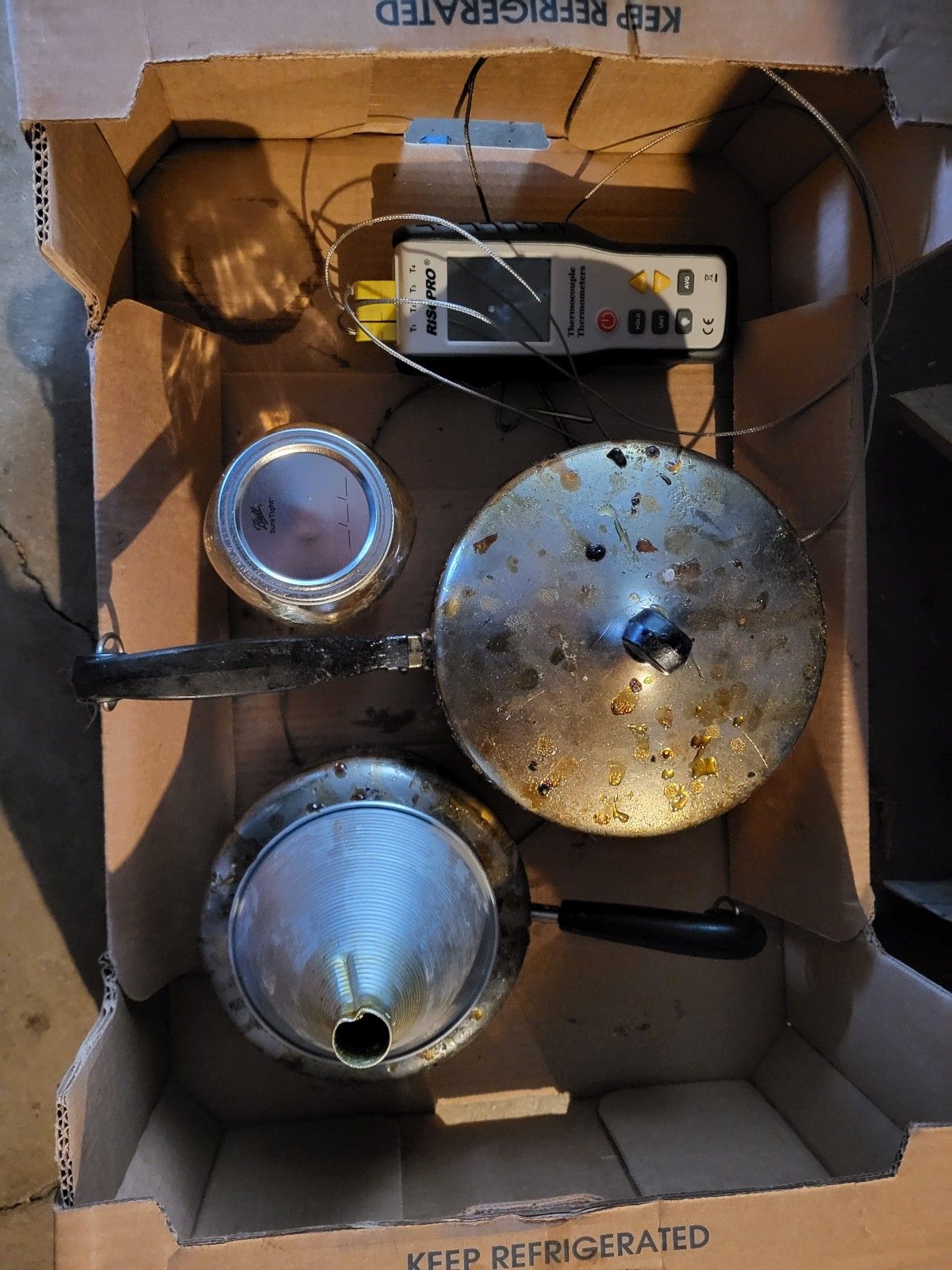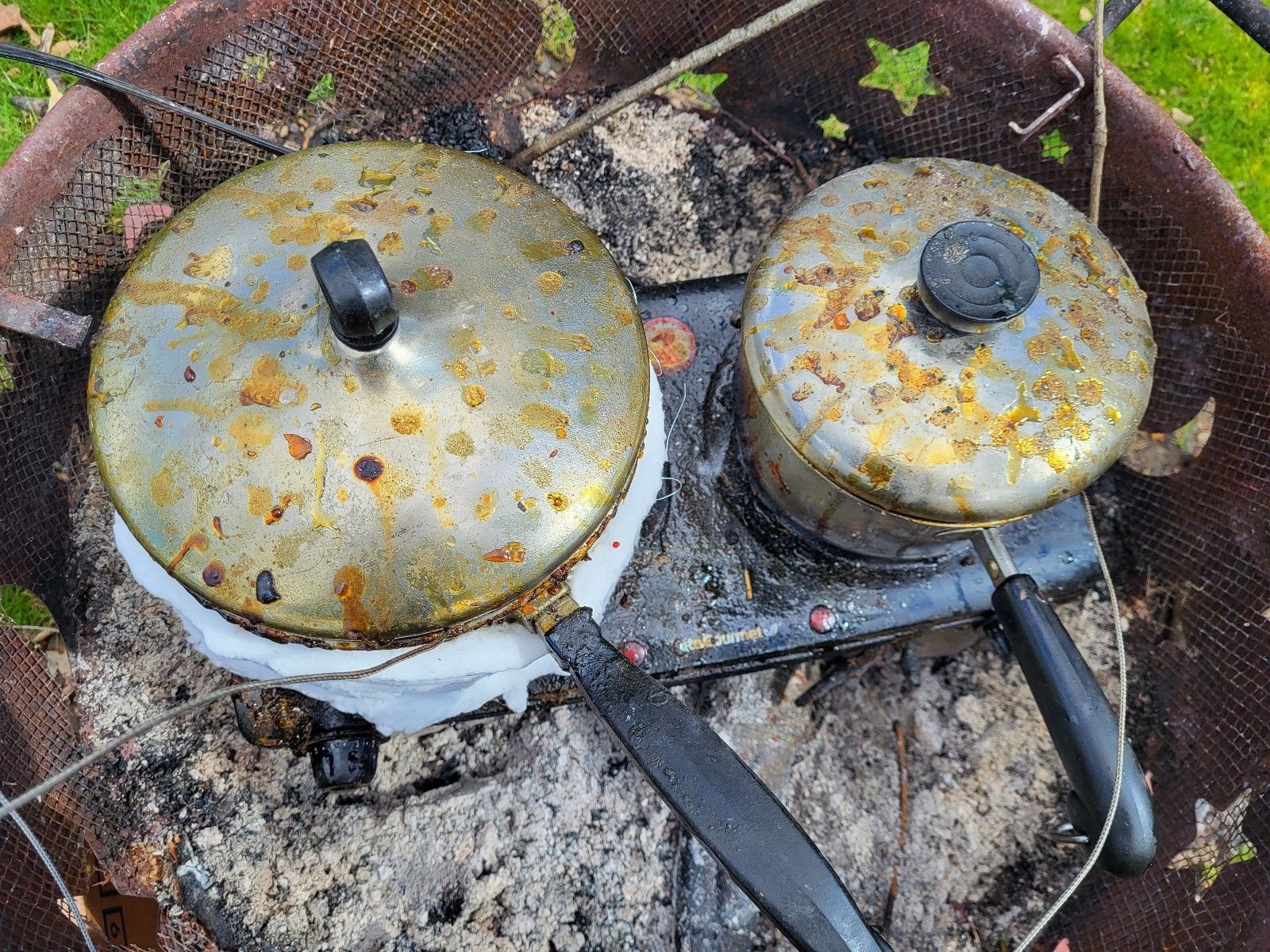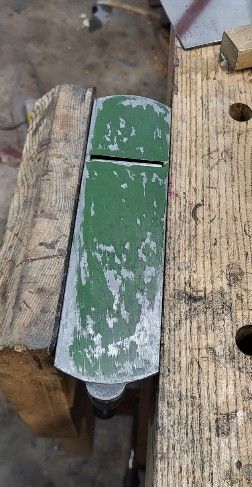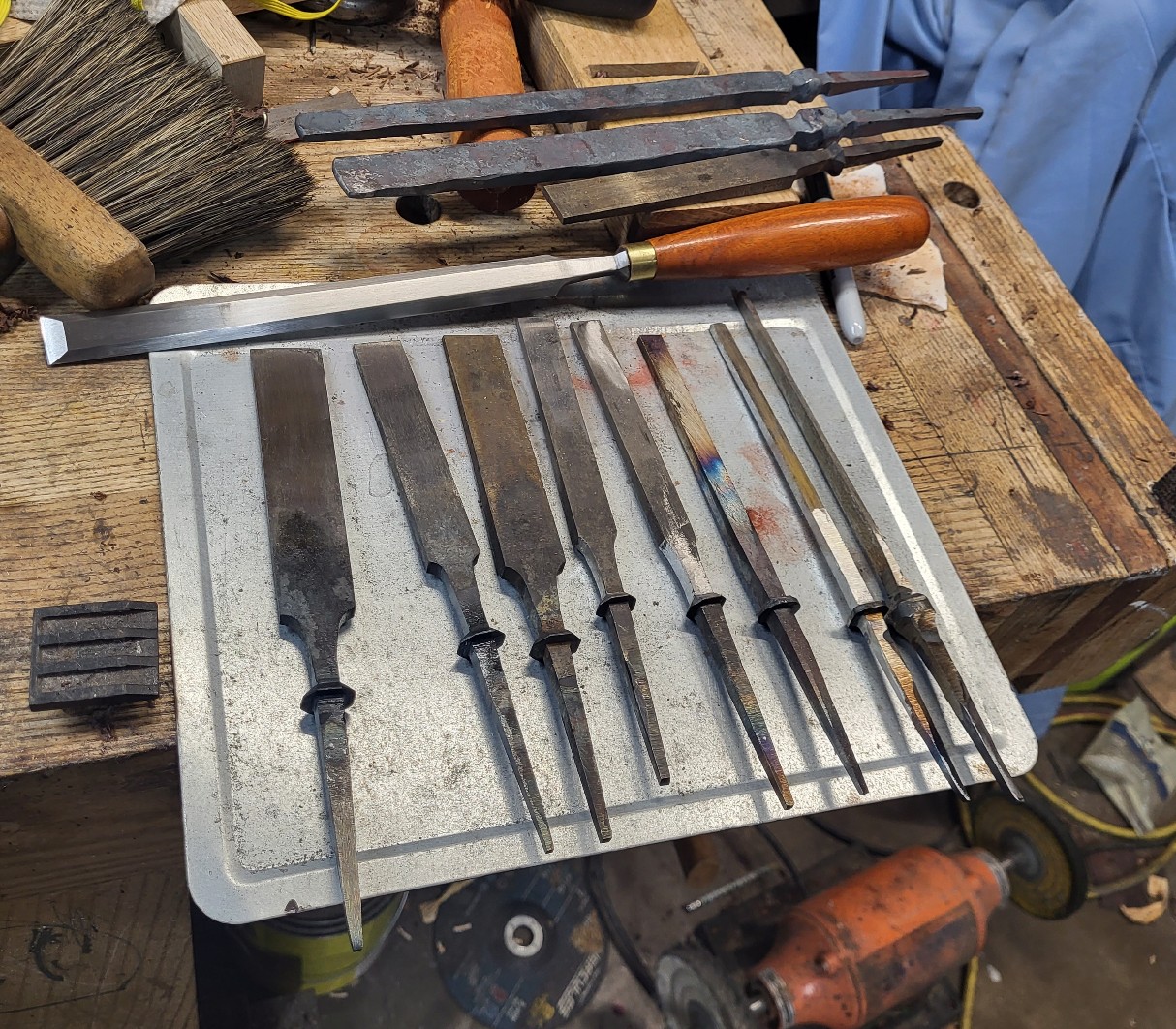The cap iron video from Kato and Kawai was never intended to provide instructions or a basis for setting a cap iron. How do we know? K&K actually flatly said that. So if you’re telling everyone “it’s just science” that you should use a flat 80 degree bevel angle because you just watched the video and now you know enough to be a doctor of planing, hold your horses and get some actual experience.
So, this whole cap iron thing has made rounds in two different places lately. One of the things that annoys me is it’s brought back up and Nicholson described how you should set up the edge of a cap iron 200+ years ago. It should be rounded. I found out about Nicholson, I don’t know when – probably five years after writing the cap iron article. When I wrote the cap iron article, I was working wood entirely by hand. the only reason I’m doing less of it right now is because of the metalworking.
If you go back and read my article, there are two flaws in it. One is Ellis (the editor) left some tearout in the picture and I am horribly disagreeable – I didn’t like it. I also had become recently aware that being disagreeable and stubborn wasn’t infrequent like I thought maybe it was. Ellis thought the picture was interesting because it showed one of his first few attempts on quartered mahogany, and that removing a lot of tearout from something that couldn’t be planed before was valuable or just as valuable. I didn’t really agree that it was valuable enough compared to showing no tearout, but feeling like I had to get over being disagreeable, I let it go. I’ve heard about the tearout in that picture a lot – but usually from people who pride themselves on opinions without accomplishments.
The second thing I let go was the article at the end saying that it was based on information from the Kato and Kawai video. It wasn’t. I figured out how to use the cap iron on my own as a swan song before quitting woodworking. It worked so I didn’t quit. Bill Tindall sent me a message (email) when I started posting with elation about the world soon changing for hand tool woodworkers. One plane under your bench if all you do is smooth – to replace the myriad of suggestions. Bag the idea of buying infill if you’re an everyman. It’s a waste of money to buy lots of stuff but more importantly (money wasn’t a problem for me), it’s a big waste of time and it also has a little bit of the “i’m a fraud” feel to it if touting that you know 14 ways to slowly get rid of tearout when one works better than all of them 99% of the time. Bill’s message was that they he and Steve Elliot were digging up info from the K and the other K in Kato and Kawai. I think, Bill will remember every detail, maybe they were conversing with only one person. At any rate, there were a bunch of documents and the videos. He sent me a link to the videos before they were public because no permission had been gotten yet in terms of sharing them.
When I described what I did on the public forum, with elation, and as much “best thing ever” excitement as I could, I thought for sure three or four people would try it, see that the Jesus Christ of metal plane parts was right under our nose and we would be saved. Instead, most of the responses were “that doesn’t work, Chris Schwarz says so” or “of all of the people I’ve met or made planes for, only one person other than Warren ever said they use it”. I have no idea who that second person was, by the way.
I either didn’t remember or later forgot the article (on woodcentral) said that it was based on the video. This is an important piece of horseshit for two reasons. The video leads you down the wrong path when setting up a cap iron on a hand plane. You’ll watch it and assume you want to have a plane with an 80 degree flat wall facing the oncoming shaving and have it twice as far away as you would otherwise.
I tried it, it worked like shit compared to a rounded edge. Why I rounded the edges, I don’t recall exactly but it just seemed to make sense. Making sense isn’t worth much, though. It proved to be better in actual use with a shallower flat bevel being an option – pretty sure I wrote 50 degrees if you couldn’t be bothered with curvature. 50 degrees is “fine” like food with decent flavor and a bad texture is “oh well, it’s fine”. That kind of food is a hell of a lot better than an empty stomach, but it’s a missed opportunity. A 50 degree flat bevel will do most things, but it will struggle a little in finer shavings in the worst of woods.
I saw the video as maybe a way to hit people up with some moving pictures and then smack them upside the monitor with a bunch of info about what actually works well in hand tools. But I wanted to avoid the idea that you need to measure things and that you could just take something from the video and have everyone doing it. the “80 degree” setting was subpar and increased the chance that you’d either have the plane stop you in your tracks or leave a fuzzy surface. What’s the point of ramming the shaving so hard back into the wood that it’s compressed and the planed surface isn’t smooth. There isn’t really one. Quickly upon finding a tolerable resistance level planing, you’d then find the thing was too far away and not preventing tearout. The rounded profile suffers the ills of neither the shallow or steep single bevel.
I found it by experimentation, Nicholson documented it long before. It’s too stark to avoid noticing unless you’re only taking tiny thing shavings. If that’s all you’re doing, your advice is no good for anyone doing more. The same is true about general plane design, setup and use if you’re only smoothing and fitting joints. You will never know as much about planing as you would if you did five hundred board feet entirely by hand. Same with sawing and so on. You learn things whether it seems like you wouldn’t or not. What is is. What you imagine is common sense may not be what is.
So, the Video Does What?
The video was apparently a segment to show at a conference in the USA, and according to Bill, the professors stated that it’s not intended to be a guide for setting anything, and Bill mentioned further that the stuff shown in the video didn’t even make the final documentation. The documentation was involved in edge wear profiles and planing kilometers of wood with a planing machine trying out different steels. They found, drum roll, that highly alloyed steels lasted longer, but the wear profiles (going from memory here) also show belly and lack of clearance that the machine can power through that none of us would ever come close to doing. I think Bill was interested in finding a secret to longer edge life and the chipbreaker video was a side show that he provided because I brought it up on a forum. I don’t know if he would’ve worked hard to get permission to show it without the discussion, I think he would have but how it would’ve been presented, I don’t know.
I remember Bill saying there was a separate paper discussing setting up the cap iron with students, or I thought it was maybe students (one of “the K’s” students in Japan). Doing some digging this morning, it was students. The separate paper for hand plane setting is brief, doesn’t explain much and has some comments that are not relevant for western planes. It does not give parameters for set distance or angles, it just says you can’t set the chipbreaker by eye and you need to judge the shaving and perhaps even measure it.
Well, you actually can’t see the end of the iron in a good dai, and if you’re looking in from the bottom, you have a very poor view because you’re relying on seeing depth. So their advice makes sense in Japanese planes. On a western plane with screw together parts that go in, of course you can learn to set it by eye – you can ignore K&Ks suggestion that you can’t. That’s what I was suggesting early on – learn what looks right and then just set it. It took me a week with no instruction to get this. I was planing a fair amount, maybe several hours worth of just planing that week, but it was still just a week.
I think all you need to do is look to see if a shaving is worked if you’re not sure. if it’s starting to straighten out, there is influence and you won’t have a disaster. Noticed in that picture with curly hard maple, the heavy shaving is flattened in areas – there is a feel that planing has when the chipbreaker is engaged.
That’s all the K&K short hand tool article said, though, set it by watching the shaving and Bill was a little unhappy with it. I think like most folks would want, he wanted instructions that were clear? I could ask him -but I’ll go with the guess. I think he doesn’t care. He uses the chipbreaker now quite a bit on furniture work – especially cleaning up junctions and such – and sets it by eye.
The video gets passed around and this part is important – the very guys who put it together said it was not intended to be used as advice for setting or doing anything.
If you’re working by hand, believe what you get for outcomes and what comes from your own hands and nerves and discernment. It’s not that hard.
I didn’t think I found something new when figuring the chipbreaker out, I thought I found something old and at the time, I was definitely pissed that the Chris Schwarz’s of the world wanted to be a source of information but couldn’t figure it out. Using the chipbreaker should be taught at the same time someone is taught about basic sharpening and the adjustment features on a plane.
Oh, and why wasn’t the student paper that big of a deal in Japan? I don’t think anyone does much planing with planes in japan on things like day to day work on building beams and doesn’t set a chipbreaker. Why didn’t we notice it? well, if you don’t know what the chipbreaker is doing, it’s easy to not notice shaving shooting up out of a plane instead of over the iron and back. And a second reason for it is if you get on youtube or the internet and you want to see Japanese woodworkers planing actual work – and not someone teaching students or appealing to tourists, you need to find things that are listed in Japanese. Google’s functionality in youtube still does a terrible job of finding someone planing a beam in what looks like a legitimate workplace.
If you look at this video or this video , notice the shaving come straight out of the plane even though they’re not that thick. Why? I would guess because planing a beam like these without a chipbreaker is a very bad gamble.
This is actually what I thought I’d find out with the chipbreaker – a way to go completely to Japanese tools, especially on smoothing. It just didn’t work out that way.
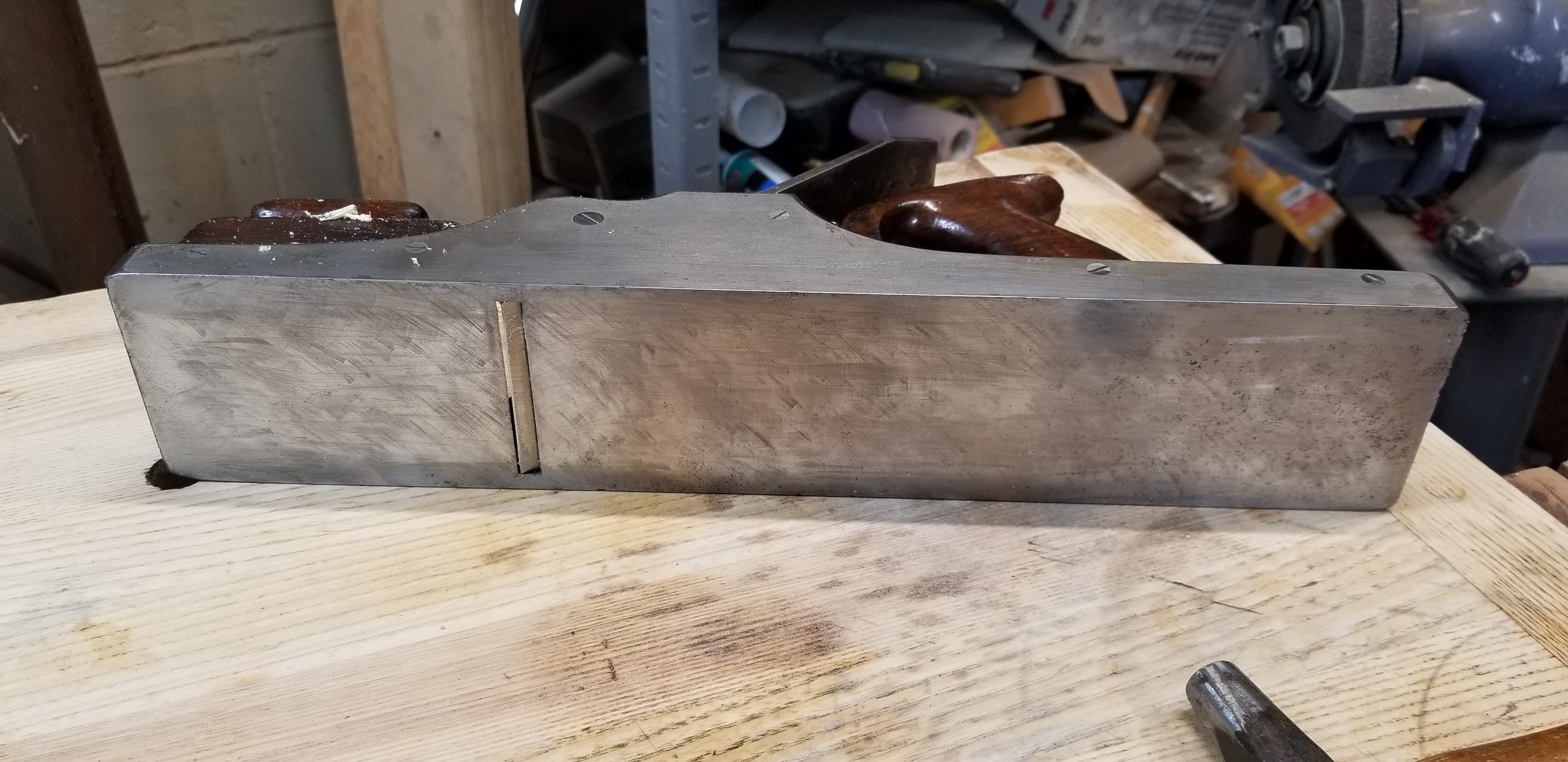
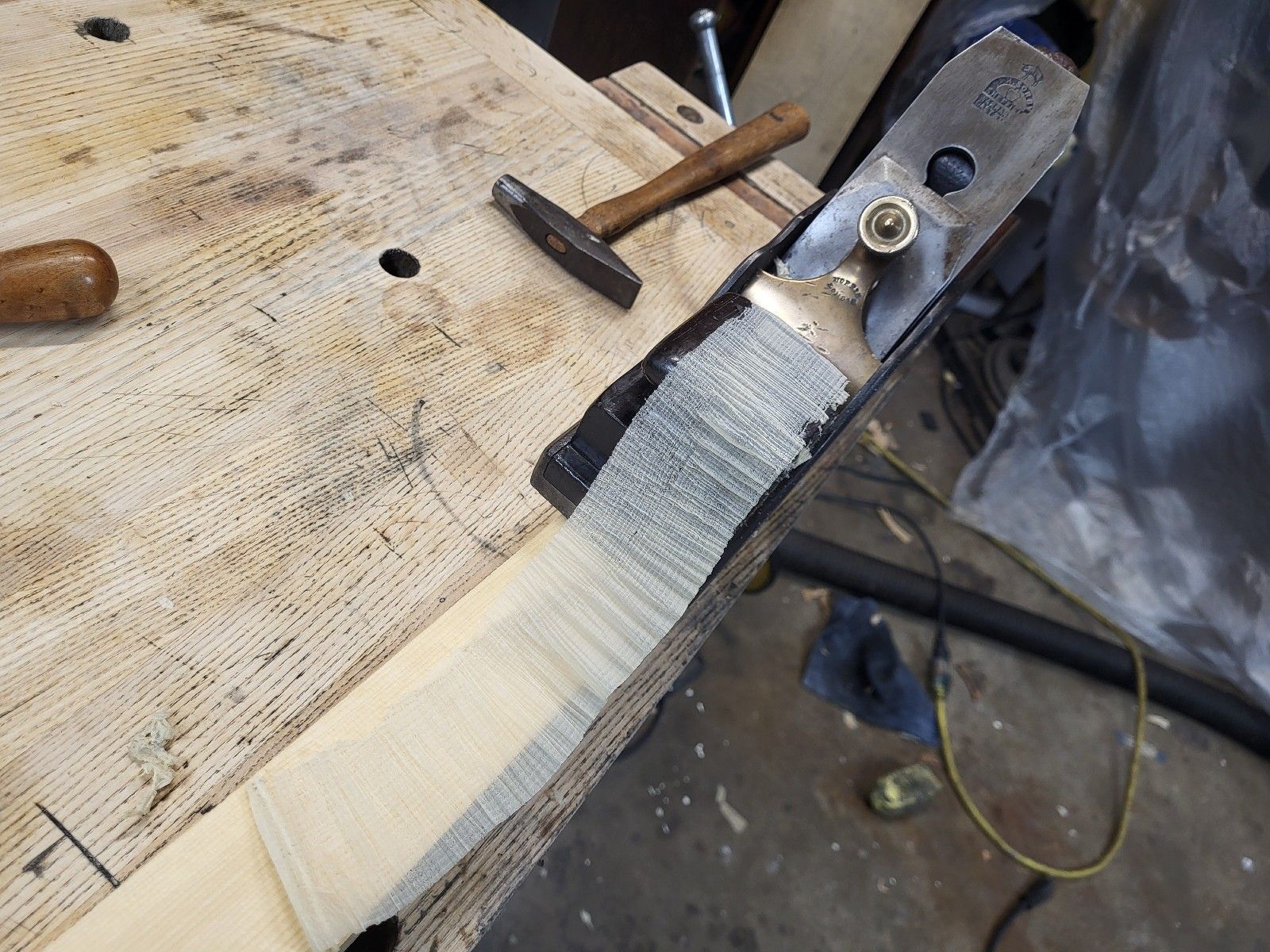


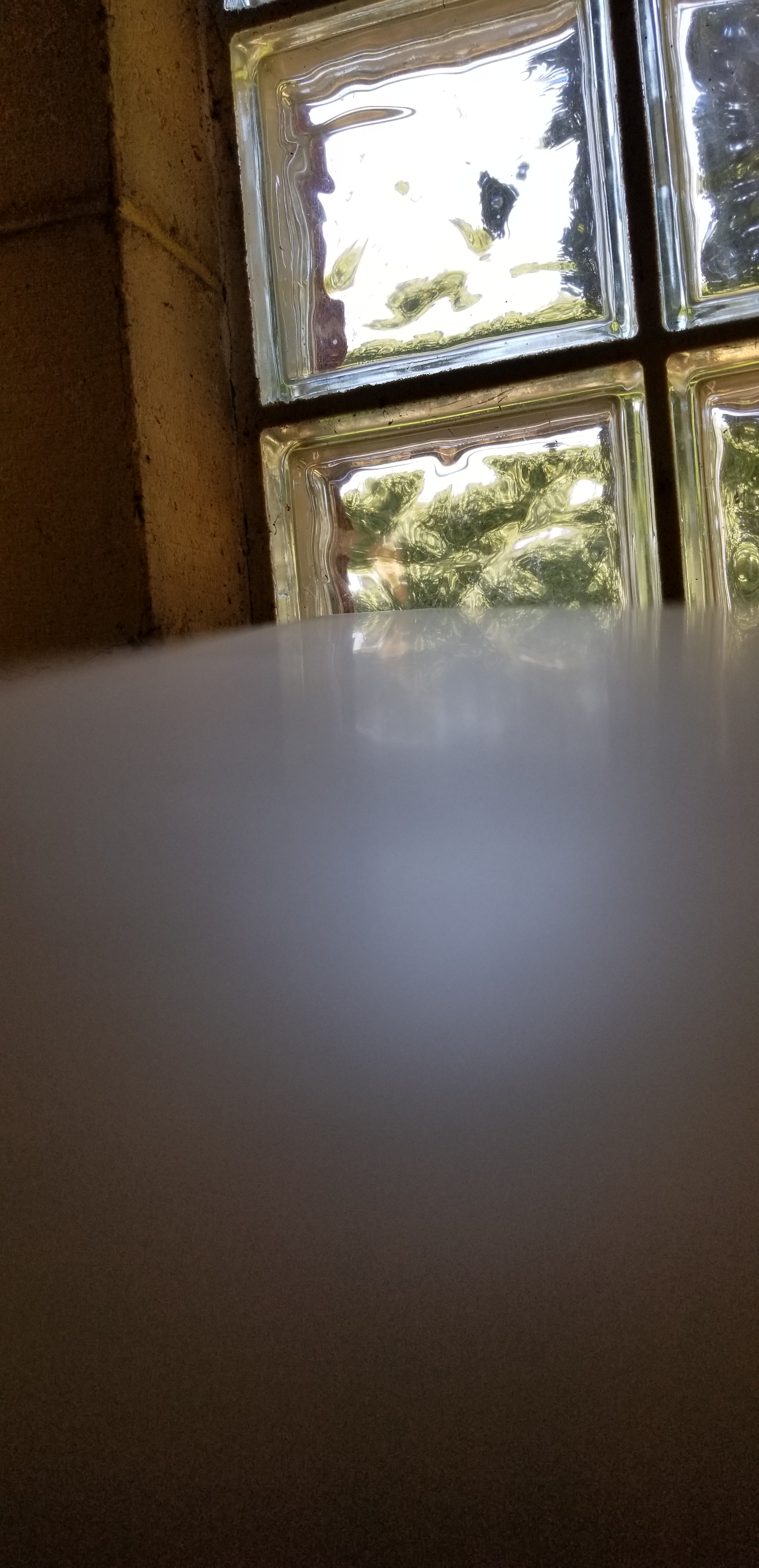
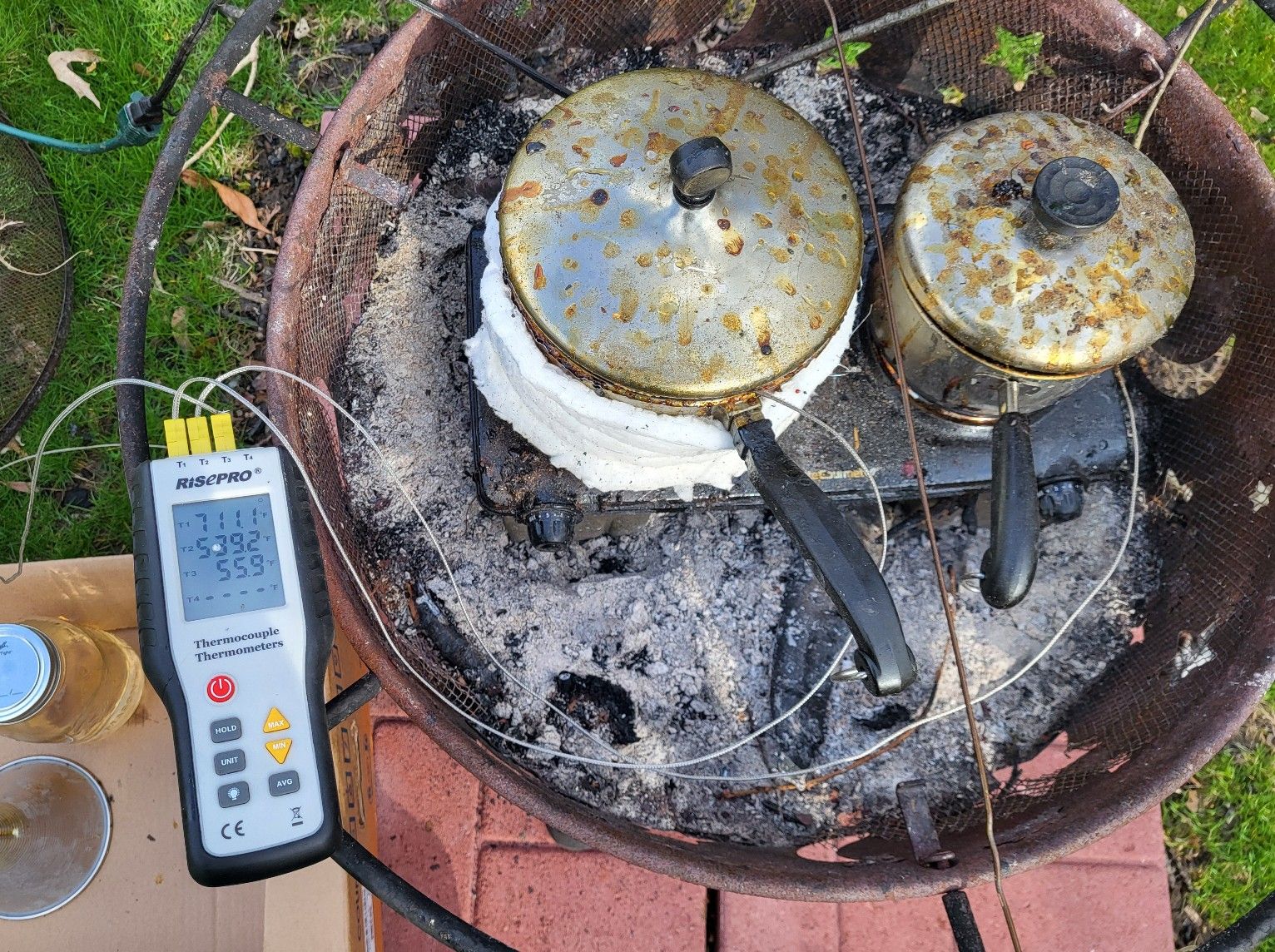

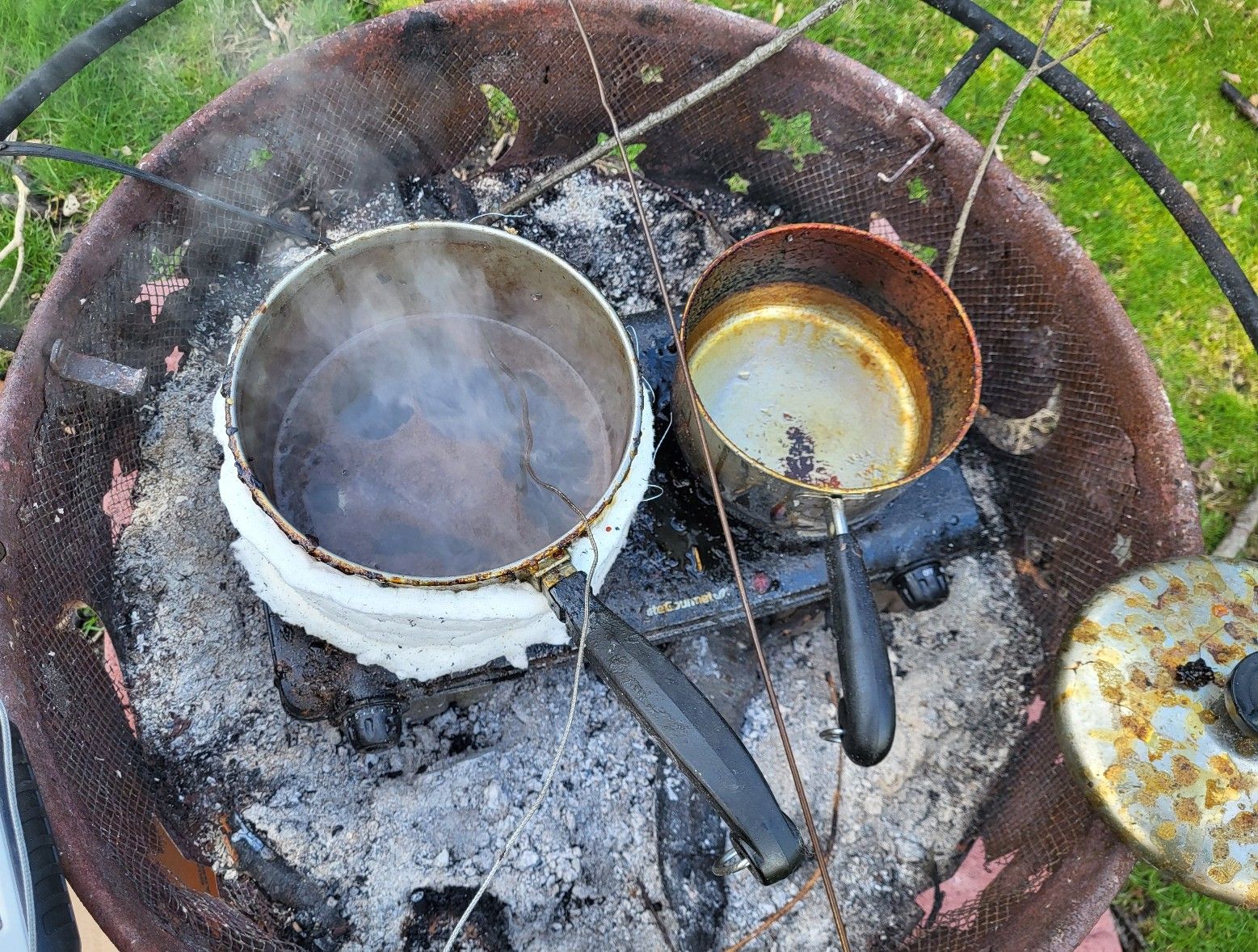



 George Wilson tells me there’s all kinds of results you can get from Amber depending on the resin, and that he’s seen resin that has kind of an ugly grayish hue. The only place I’ve ever bought it is Wood Finishing Enterprises, and the result is the reddish brown color here. the little grains are all different colors. If you like sorting socks, you could actually separate them all and color match them. I’m satisfied with the mixed result. On dark woods like rosewood, you can’t see the reddish and on orangey red woods, I think the color is a strong enhancement of the base wood, and it’s in the varnish – not some faff-around experiment with dyes or stains. That’s a nice thing.
George Wilson tells me there’s all kinds of results you can get from Amber depending on the resin, and that he’s seen resin that has kind of an ugly grayish hue. The only place I’ve ever bought it is Wood Finishing Enterprises, and the result is the reddish brown color here. the little grains are all different colors. If you like sorting socks, you could actually separate them all and color match them. I’m satisfied with the mixed result. On dark woods like rosewood, you can’t see the reddish and on orangey red woods, I think the color is a strong enhancement of the base wood, and it’s in the varnish – not some faff-around experiment with dyes or stains. That’s a nice thing.